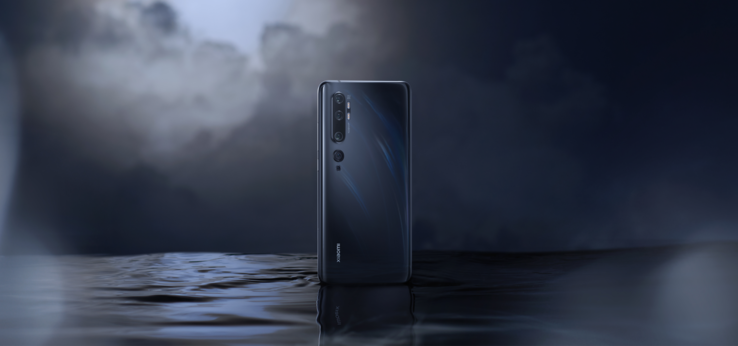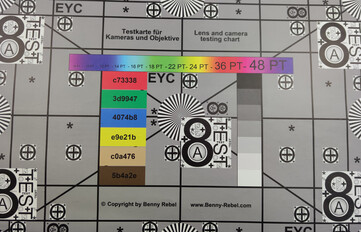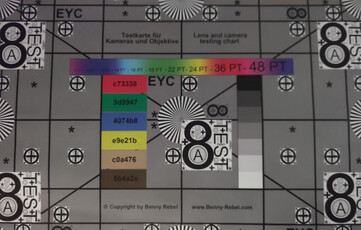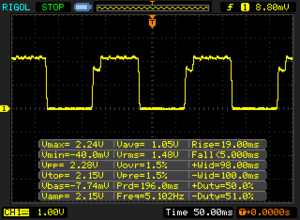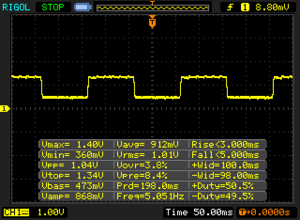Xiaomi Mi Note 10 Pro Akıllı Telefon İncelemesi - Biraz Daha
Comparison Devices
Bewertung | Rating Version | Datum | Modell | Gewicht | Laufwerk | Groesse | Aufloesung | Preis ab |
|---|---|---|---|---|---|---|---|---|
| 83.8 % v7 (old) | v7 (old) | 01/2020 | Xiaomi Mi Note 10 Pro SD 730G, Adreno 618 | 208 g | 256 GB UFS 2.0 Flash | 6.47" | 2340x1080 | |
| 83.3 % v7 (old) | v7 (old) | 12/2019 | Xiaomi Mi Note 10 SD 730G, Adreno 618 | 208 g | 128 GB UFS 2.0 Flash | 6.47" | 2340x1080 | |
| 85.8 % v7 (old) | v7 (old) | 10/2019 | OnePlus 7T SD 855+, Adreno 640 | 190 g | 128 GB UFS 3.0 Flash | 6.55" | 2400x1080 | |
| 84.2 % v7 (old) | v7 (old) | 10/2019 | Samsung Galaxy A90 5G SD 855, Adreno 640 | 206 g | 128 GB UFS 3.0 Flash | 6.70" | 2400x1080 | |
| 86 % v7 (old) | v7 (old) | 05/2019 | Asus ZenFone 6 ZS630KL SD 855, Adreno 640 | 190 g | 128 GB UFS 2.1 Flash | 6.40" | 2340x1080 |
Top 10
» Top 10 Multimedia Notebook listesi
» Top 10 oyun notebooku
» Top 10 bütçeye uygun Ofis/İş Notebook Listesi
» Top 10 Premium Ofis/İş notebookları
» Top 10 Çalışma istasyonu laptopları
» Top 10 Subnotebook listesi
» Top 10 Ultrabooklar
» En iyi 10 dönüştürülebilir modeli
» Seçimi en iyi 10 tablet
» Notebookcheck Top 10 Windows Tabletleri
» Top 10 Subnotebook listesi
» NotebookCheck tarafından incelenen en iyi Notebook ekranları
» Notebookcheck'in 500 Euro altındaki en iyi 10 Notebook listesi
» NotebookCheck tarafından seçilen 300 Euro altındaki en iyi 10 Notebook
» Notebookcheck'in 500 Euro altındaki en iyi 10 Notebook listesi
» Notebookcheck'in Top 10 akıllı telefon listesi
» Notebookcheck'in Top 10 hafif oyun notebookları
Boyut Karşılaştırma
| Networking | |
| iperf3 transmit AX12 | |
| Asus ZenFone 6 ZS630KL | |
| Samsung Galaxy A90 5G | |
| OnePlus 7T | |
| Xiaomi Mi Note 10 | |
| Xiaomi Mi Note 10 Pro | |
| iperf3 receive AX12 | |
| Samsung Galaxy A90 5G | |
| Asus ZenFone 6 ZS630KL | |
| OnePlus 7T | |
| Xiaomi Mi Note 10 | |
| Xiaomi Mi Note 10 Pro | |
Görüntü Karşılaştırma
Bir sahne seçin ve ilk görüntüde gezinin. Tek bir tıklama dokunmatik ekranlardaki konumu değiştirir. Yakınlaştırılmış görüntüye tek tıklamayla orijinal yeni bir pencerede açılır. İlk resimde test cihazının ölçekli fotoğrafı gösterilmektedir.
Scene 1Scene 2Scene 3
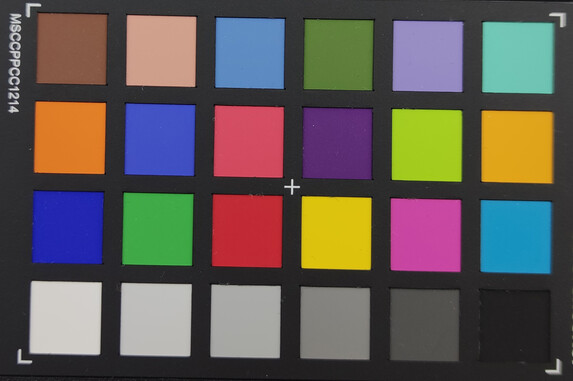
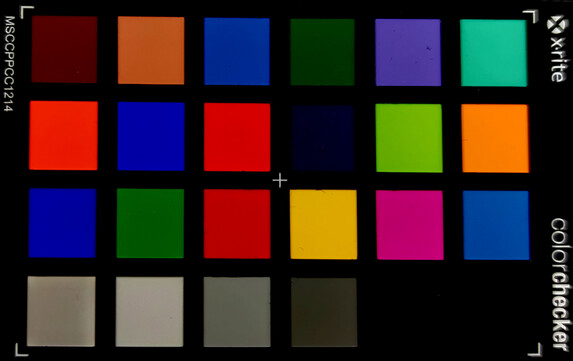
| |||||||||||||||||||||||||
Aydınlatma: 89 %
Batarya modunda parlaklık: 579 cd/m²
Kontrast: ∞:1 (Siyah: 0 cd/m²)
ΔE ColorChecker Calman: 4.61 | ∀{0.5-29.43 Ø4.78}
ΔE Greyscale Calman: 4.2 | ∀{0.09-98 Ø5}
100% sRGB (Calman 2D)
Gamma: 2.244
CCT: 7201 K
| Xiaomi Mi Note 10 Pro AMOLED, 2340x1080, 6.5" | Xiaomi Mi Note 10 AMOLED, 2340x1080, 6.5" | OnePlus 7T AMOLED, 2400x1080, 6.6" | Samsung Galaxy A90 5G Super AMOLED, 2400x1080, 6.7" | Asus ZenFone 6 ZS630KL IPS, 2340x1080, 6.4" | |
|---|---|---|---|---|---|
| Response Times | 21% | 50% | 25% | -229% | |
| Response Time Grey 50% / Grey 80% * (ms) | 8 ? | 10 ? -25% | 6 ? 25% | 10 ? -25% | 44 ? -450% |
| Response Time Black / White * (ms) | 24 ? | 8 ? 67% | 6 ? 75% | 6 ? 75% | 25.6 ? -7% |
| PWM Frequency (Hz) | 255 | 215.5 | 357 | 223 | 2404 ? |
| Screen | 5% | 20% | -13% | 1% | |
| Brightness middle (cd/m²) | 579 | 625 8% | 693 20% | 581 0% | 569 -2% |
| Brightness (cd/m²) | 576 | 607 5% | 703 22% | 581 1% | 537 -7% |
| Brightness Distribution (%) | 89 | 89 0% | 96 8% | 94 6% | 79 -11% |
| Black Level * (cd/m²) | 0.31 | ||||
| Colorchecker dE 2000 * | 4.61 | 4.38 5% | 3.42 26% | 5.44 -18% | 3.5 24% |
| Colorchecker dE 2000 max. * | 7.72 | 6.83 12% | 6.12 21% | 13.05 -69% | 6 22% |
| Greyscale dE 2000 * | 4.2 | 4.1 2% | 3.3 21% | 4 5% | 5.1 -21% |
| Gamma | 2.244 98% | 2.251 98% | 2.265 97% | 2.118 104% | 2.36 93% |
| CCT | 7201 90% | 7251 90% | 6799 96% | 5882 111% | 6827 95% |
| Contrast (:1) | 1835 | ||||
| Toplam Ortalama (Program / Ayarlar) | 13% /
9% | 35% /
27% | 6% /
-3% | -114% /
-57% |
* ... daha küçük daha iyidir
Yanıt Sürelerini Görüntüle
| ↔ Tepki Süresi Siyahtan Beyaza | ||
|---|---|---|
| 24 ms ... yükseliş ↗ ve sonbahar↘ birleşimi | ↗ 19 ms yükseliş | |
| ↘ 5 ms sonbahar | ||
| Ekran, testlerimizde iyi yanıt oranları gösteriyor ancak rekabetçi oyuncular için çok yavaş olabilir. Karşılaştırıldığında, test edilen tüm cihazlar 0.1 (minimum) ile 240 (maksimum) ms arasında değişir. » Tüm cihazların 53 %'si daha iyi. Bu, ölçülen yanıt süresinin test edilen tüm cihazların ortalamasından (20.2 ms) daha kötü olduğu anlamına gelir. | ||
| ↔ Tepki Süresi %50 Griden %80 Griye | ||
| 8 ms ... yükseliş ↗ ve sonbahar↘ birleşimi | ↗ 3 ms yükseliş | |
| ↘ 5 ms sonbahar | ||
| Ekran, testlerimizde hızlı yanıt oranları gösteriyor ve oyun oynamaya uygun olmalı. Karşılaştırıldığında, test edilen tüm cihazlar 0.165 (minimum) ile 636 (maksimum) ms arasında değişir. » Tüm cihazların 19 %'si daha iyi. Bu, ölçülen yanıt süresinin test edilen tüm cihazların ortalamasından (31.6 ms) daha iyi olduğu anlamına gelir. | ||
Ekran Titremesi / PWM (Darbe Genişliği Modülasyonu)
| Ekran titriyor / PWM algılandı | 255 Hz | ||
Ekran arka ışığı 255 Hz'de titriyor (en kötü durum, örneğin PWM kullanılması) . 255 Hz frekansı nispeten yüksektir, bu nedenle PWM'ye duyarlı çoğu kullanıcı herhangi bir titremeyi fark etmemelidir. Ancak bazı kullanıcıların 500 Hz ve üzeri PWM'ye hâlâ duyarlı olduğuna dair raporlar var, bu nedenle dikkatli olun. Karşılaştırıldığında: Test edilen tüm cihazların %53 %'si ekranı karartmak için PWM kullanmıyor. PWM tespit edilirse, ortalama 8095 (minimum: 5 - maksimum: 343500) Hz ölçüldü. | |||
| Xiaomi Mi Note 10 Pro | Xiaomi Mi Note 10 | OnePlus 7T | Samsung Galaxy A90 5G | Asus ZenFone 6 ZS630KL | Ortalama 256 GB UFS 2.0 Flash | Sınıf ortalaması Smartphone | |
|---|---|---|---|---|---|---|---|
| AndroBench 3-5 | 4% | 40% | 114% | 35% | -9% | 377% | |
| Sequential Read 256KB (MB/s) | 499.2 | 480.5 -4% | 1406 182% | 1418 184% | 831 66% | 484 ? -3% | 2228 ? 346% |
| Sequential Write 256KB (MB/s) | 205.1 | 243.6 19% | 218.4 6% | 522 155% | 195.6 -5% | 203 ? -1% | 1852 ? 803% |
| Random Read 4KB (MB/s) | 119.2 | 106.2 -11% | 170.1 43% | 190.5 60% | 153.3 29% | 131.7 ? 10% | 296 ? 148% |
| Random Write 4KB (MB/s) | 108.5 | 118.9 10% | 29.9 -72% | 168.5 55% | 160.2 48% | 65.3 ? -40% | 339 ? 212% |
| Sequential Read 256KB SDCard (MB/s) | 75.1 ? | 87 ? | 74.5 ? | ||||
| Sequential Write 256KB SDCard (MB/s) | 59.4 ? | 62.5 ? | 53.5 ? |
(+) Üst taraftaki maksimum sıcaklık, 35.2 °C / 95 F ortalamasına kıyasla 39.8 °C / 104 F'dir. , Smartphone sınıfı için 21.9 ile 247 °C arasında değişir.
(+) Alt kısım, 34 °C / 93 F ortalamasına kıyasla maksimum 39.6 °C / 103 F'ye kadar ısınır
(+) Boşta kullanımda, üst tarafın ortalama sıcaklığı 29 °C / 84 F olup, cihazın 32.9 °C / 91 F.
Xiaomi Mi Note 10 Pro ses analizi
(±) | hoparlör ses yüksekliği ortalama ama iyi (81.7 dB)
Bas 100 - 315Hz
(-) | neredeyse hiç bas yok - ortalama olarak medyandan 65.7% daha düşük
(+) | bas doğrusaldır (0% delta ile önceki frekans)
Ortalar 400 - 2000 Hz
(-) | neredeyse hiç orta seviye yok - ortalama olarak medyandan 65.7% daha düşük
(+) | orta frekanslar doğrusaldır (0% deltadan önceki frekansa)
Yüksekler 2 - 16 kHz
(-) | neredeyse hiç yüksek yok - ortalama olarak medyandan 65.7% daha düşük
(+) | yüksekler doğrusaldır (0% deltadan önceki frekansa)
Toplam 100 - 16.000 Hz
(-) | genel ses doğrusal değildir (121.7% ortancaya göre fark)
Aynı sınıfla karşılaştırıldığında
» Bu sınıftaki tüm test edilen cihazların %90%'si daha iyi, 8% benzer, 2% daha kötüydü
» En iyisinin deltası 11% idi, ortalama 35% idi, en kötüsü 134% idi
Test edilen tüm cihazlarla karşılaştırıldığında
» Test edilen tüm cihazların %97'si daha iyi, 2 benzer, % 1 daha kötüydü
» En iyisinin deltası 4% idi, ortalama 24% idi, en kötüsü 134% idi
Xiaomi Mi Note 10 ses analizi
(+) | hoparlörler nispeten yüksek sesle çalabilir (83.6 dB)
Bas 100 - 315Hz
(-) | neredeyse hiç bas yok - ortalama olarak medyandan 69.6% daha düşük
(+) | bas doğrusaldır (0% delta ile önceki frekans)
Ortalar 400 - 2000 Hz
(-) | neredeyse hiç orta seviye yok - ortalama olarak medyandan 69.6% daha düşük
(+) | orta frekanslar doğrusaldır (0% deltadan önceki frekansa)
Yüksekler 2 - 16 kHz
(-) | neredeyse hiç yüksek yok - ortalama olarak medyandan 69.6% daha düşük
(+) | yüksekler doğrusaldır (0% deltadan önceki frekansa)
Toplam 100 - 16.000 Hz
(-) | genel ses doğrusal değildir (119.9% ortancaya göre fark)
Aynı sınıfla karşılaştırıldığında
» Bu sınıftaki tüm test edilen cihazların %89%'si daha iyi, 8% benzer, 3% daha kötüydü
» En iyisinin deltası 11% idi, ortalama 35% idi, en kötüsü 134% idi
Test edilen tüm cihazlarla karşılaştırıldığında
» Test edilen tüm cihazların %97'si daha iyi, 3 benzer, % 1 daha kötüydü
» En iyisinin deltası 4% idi, ortalama 24% idi, en kötüsü 134% idi
| Xiaomi Mi Note 10 Pro 5260 mAh | Xiaomi Mi Note 10 5260 mAh | OnePlus 7T 3800 mAh | Samsung Galaxy A90 5G 4500 mAh | Asus ZenFone 6 ZS630KL 5000 mAh | Sınıf ortalaması Smartphone | |
|---|---|---|---|---|---|---|
| Battery Runtime | ||||||
| WiFi Websurfing (h) | 18.5 | 18.8 2% | 14.9 -19% | 15.8 -15% | 13.4 -28% | 19.3 ? 4% |
Artılar
Eksiler
Xiaomi Mi Note 10 Pro
- 09/03/2022 v7 (old)
Florian Schmitt




